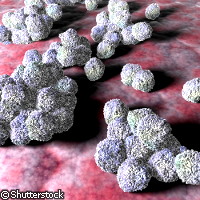Scientists reveal geographical link to MRSA
Researchers have long wondered about the geographic distribution of microbial pathogens, particularly because understanding their distribution would fuel development of strategies to reduce their transmission. Published in the PLoS (Public Library of Science) Medicine journal, new EU-funded research shows that the pathogen methicillin-resistant Staphylococcus aureus (MRSA) makes its presence known in distinct geographical clusters across Europe. In the last decade, hospitals reported increasing numbers of MRSA infections. For this latest study, Professor Hajo Grundmann of the University Medical Center Groningen in the Netherlands, together with colleagues, launched an investigation in 450 European hospitals in 26 countries in 2006. The hospitals gathered MRSA and methicillin-sensitive S. aureus (MSSA) isolates from infected patients (MRSA emerges when MSSA clones become resistant to antibiotics). By using molecular typing methods, the laboratories across the countries identified specific strains of S. aureus and input the information into a Web-based mapping application. Contrary to what some people might think, the research showed that MRSA is spread when patients move between hospitals rather than freely in the community. The results also indicated that MRSA strains tend to cluster within regional borders. 'This important finding suggests that control efforts aimed at interrupting the spread within and between healthcare institutions may not only be feasible but ultimately successful, and should therefore be strongly encouraged,' the study's authors wrote. 'We also showed that an international surveillance network sharing decentralised typing results on a Web-based platform can provide crucial information for clinicians, diagnostic microbiologists, and infection control teams on the dynamics of S. aureus spread, and especially the spread of MRSA isolates, to provide early warning of emerging strains, cross-border spread, and importation by travel.' Writing in a Perspective published in PLoS Medicine, Professor Franklin Lowy of Columbia University said the study 'illustrates the ability of spatial mapping techniques to help understand the spread of new or re-emerging pathogens at the local as well as the international level'. The strongest aspect of this study is that it 'shows the potential value of this integrated approach', he noted. The study also offers information on whether clones of S. aureus are randomly distributed or clustered. 'The authors show that by linking strain profiles with patient outcomes, they can generate information on the potential virulence of a particular clone,' Professor Lowy explained. 'In the future, this approach could be applied to strains isolated from the community, strains from different tissue sites, or to strains with or without selected virulence genes.'



